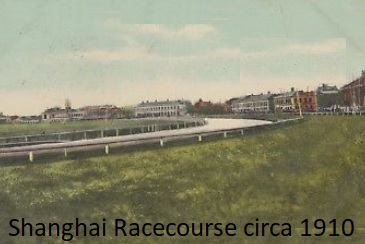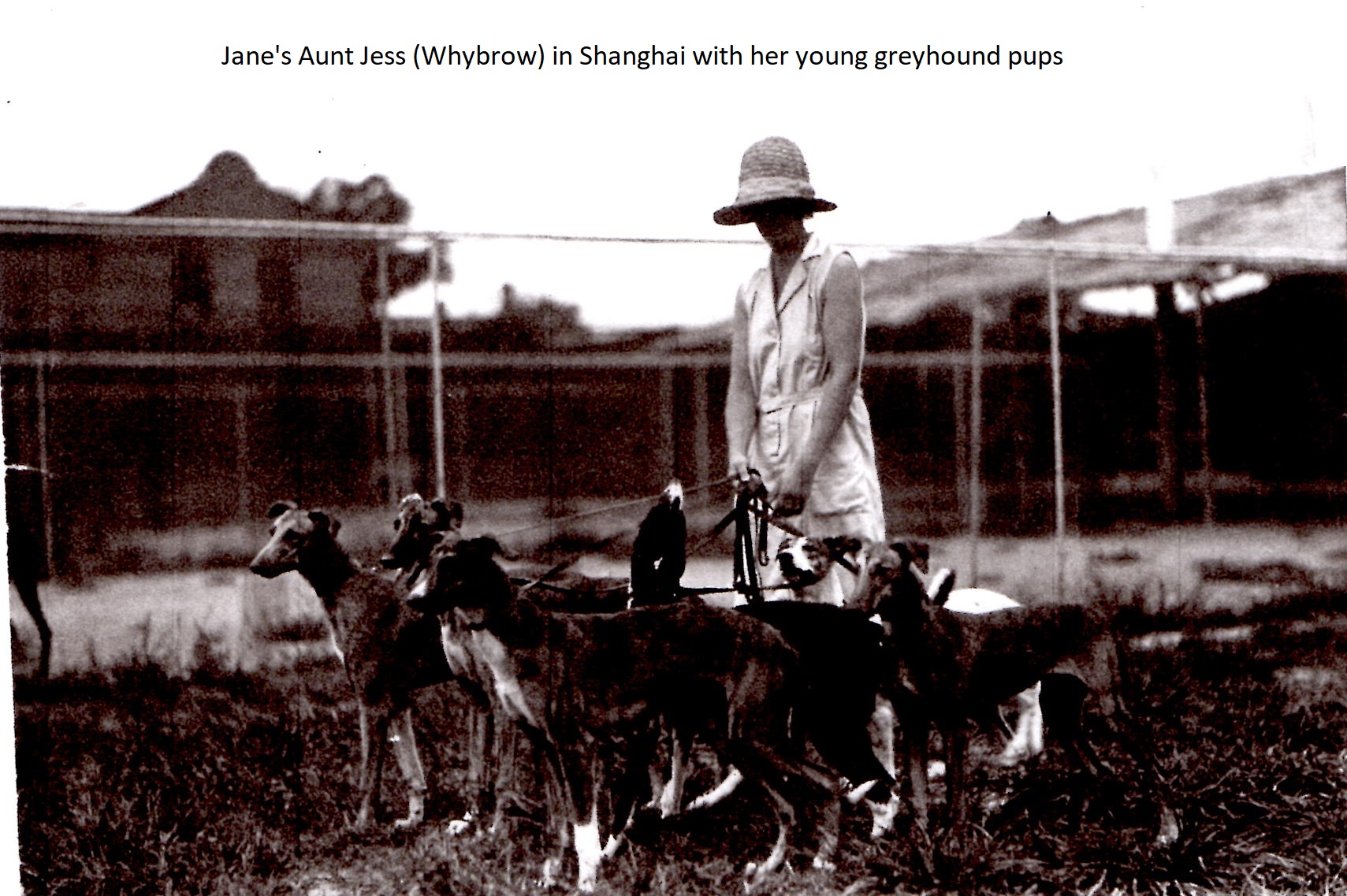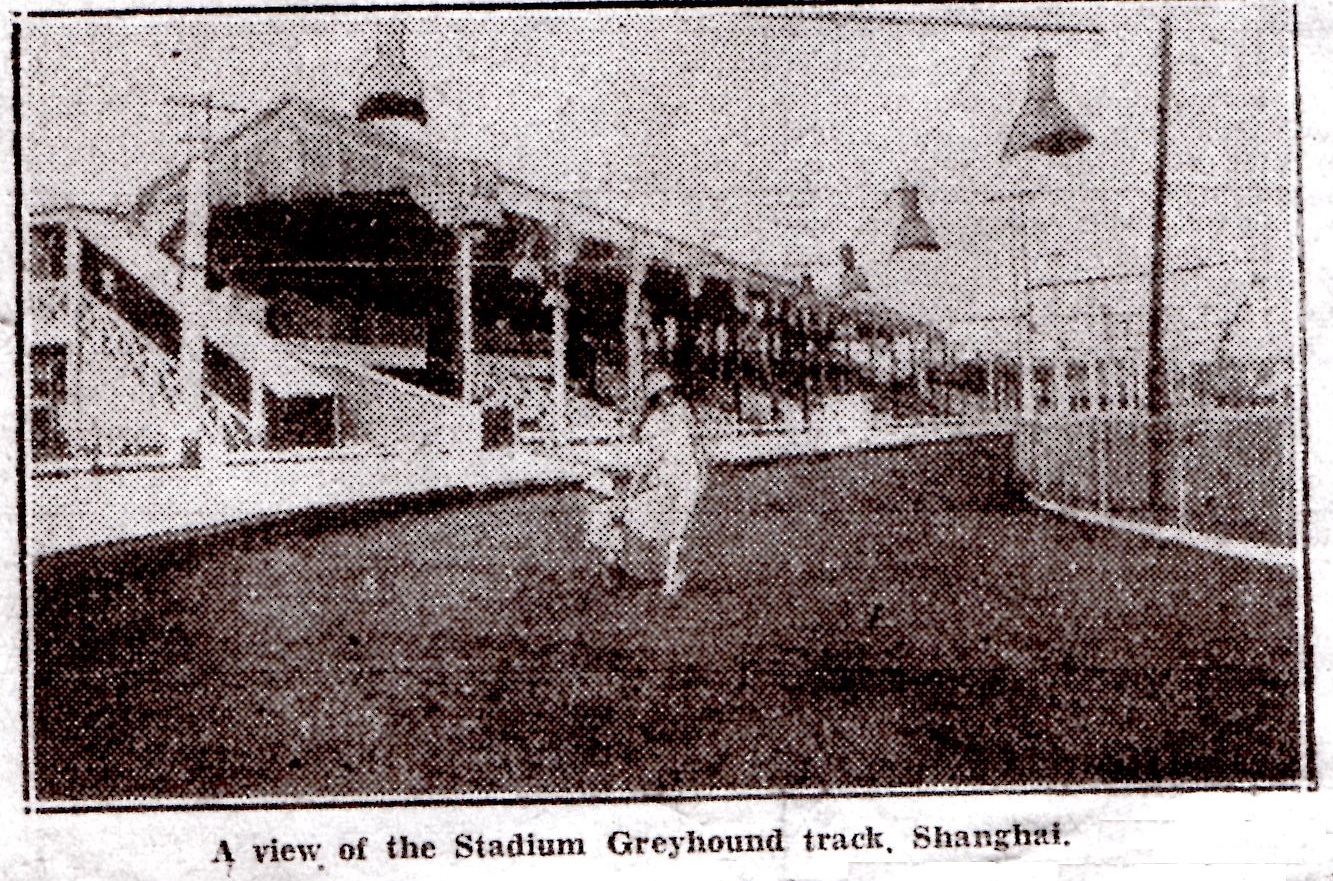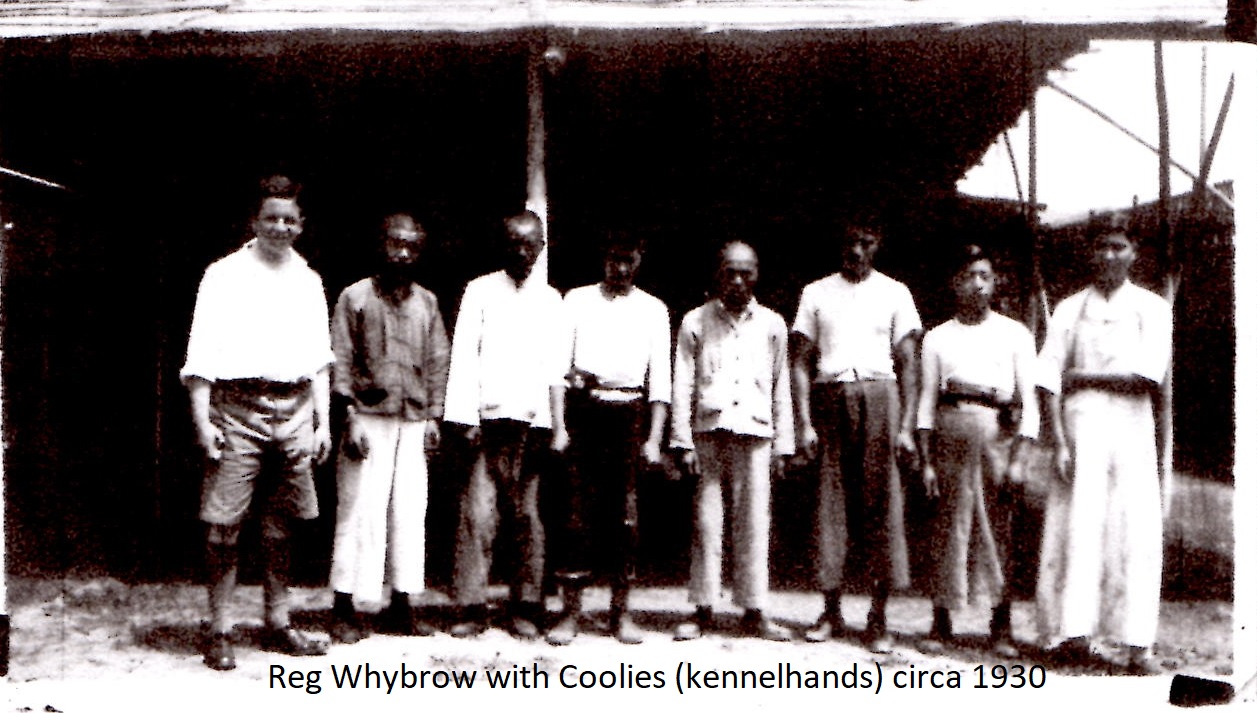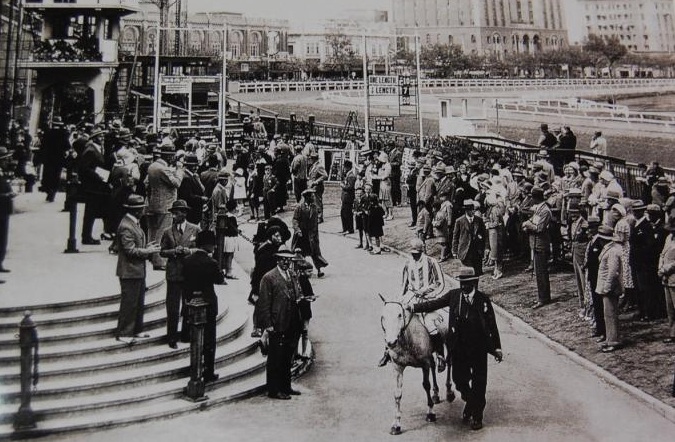| SHANGHAI RACECOURSE and GREYHOUND TRACK | |||
| A racecourse is known to have existed in Shanghai as early as 1850 on a plot of land known as the Old Park, although racing was at this time confined to pony racing. However, by 1854 the course was extended and meetings were increased to two per year in May and again in November. By 1858 a more expansive area of land was developed at Defence Creek and its first meeting took place in 1860. | |||
Amazingly Greyhound racing was introduced to China in 1921 when a group of British businessmen, led by Duncan Elidor Campbell, formed a company to build greyhound race tracks and promote the sport of greyhound racing in Shanghai. Many of the owners were British or Australian, and a large number of greyhounds were imported from these two countries to be trained by English trainers, cared for by English kennel hands, to race at the newly opened Luna Park. The track operated for two evening meetings per week, and the stands were packed with British enthusiasts and Chinese punters who were always keen to gamble. It was a remarkably ambitious project given that greyhound racing in England did not take off until 1927, the first year in which the Greyhound Derby was contested. Duncan Elidor Campbell was born on 10th October 1880 at Clewer, near Windsor in Berkshire; a stones throw from Windsor Racecourse, and was the son of the Honourable Alexander Campbell. Duncan had a very successful Army career serving in the Northumberland Yeomanry and reaching the rank of Major. He gained the Distinguished Service Order in 1918 and the Territorial Decoration before going to Shanghai, where he helped to form the Greyhound Racing Association (China) Limited. Shown below is a Luna Park Greyhound Members badge, along with two images of fans that were issued at the racetrack. |
|||
The photo below shows the Shanghai course in 1910.
|
The project was extremely successful whilst it was run by the British company, but the Chinese authorities became jealous of the success, especially as they did not get a percentage of the profits. They made their views known to London and at a meeting of the ruling Council they passed an Order in Council to ban British businessmen from owning or managing Greyhound tracks in the country. The Chinese took over the running of two tracks, a move that was destined to fail because corruption, poor management of the racing dogs, links with drug smuggling barons and the desire of some trainers to prevent their greyhounds from running up to their merit caused the local punters to lose confidence in the fairness of the tracks. As a direct consequence crowd sizes reduced and by 1931 the tracks closed for business. Major Duncan Elidor Campbell did not witness the demise of greyhound racing in China as he died on 2nd September 1930 aged just 49. He had married the Honourable Florence Evelyne Willey on 6th June 1914 and they had 2 children, Alister and Ian. Alister died on 30th August 1945 in action in Burma at the age of just 27. |
||
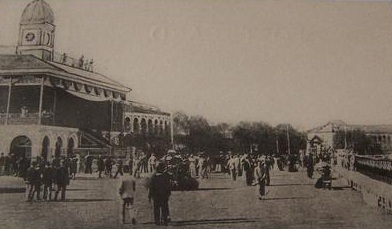 |
|||
Greyhound racing also took place in China at the Canidrome which was built in 1928. Cani means dog and drome means racecourse, and the stadium could house up to 50,000 punters. It continued to operate until banned by the Communist Party in 1949. The racecourse closed in 1951 and was paved over by the People's Park and People's Square which covered 140,000 square metres. The picture above, on the far right, shows the City Hall which was built on the site of the racecourse. In 1952 the Shanghai Museum was opened on the same site. |
|||
One family's experience of Shanghai Greyhound track |
|||
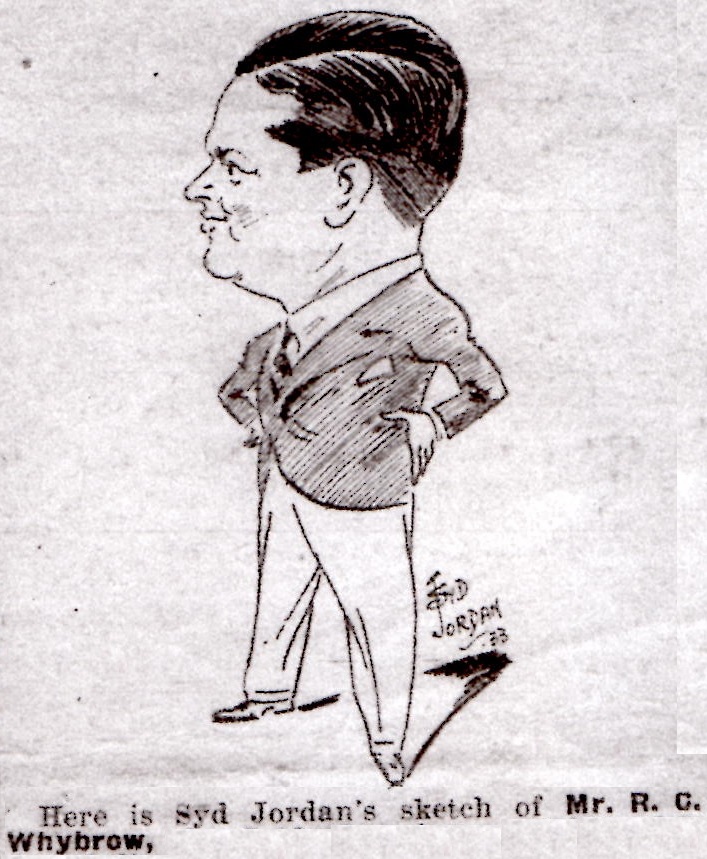 |
In 1929 Reg Whybrow was Racing Manager at the Monmore Green racetrack in Wolverhampton. He was offered, and accepted, a new challenge as Racing Manager of the Shanghai Greyhound Club despite him and wife Jess having a son in 1927. The family of three set off for China in 1929 with Reg keen to make his mark on the other side of the world. In a very short while Reg was so innovative he began attracting the attention of the local press who reported, 'Tonight's meeting at the Stadium is a first in three respects; the first time that a meeting has taken place on a Saturday; the first real inter-track meeting between the Stadium and Luna Park; and last but not least, the first time a lady has appeared as a trainer'. That lady was Reg's wife Jess who had gained invaluable experience in England and was using her wealth of knowledge and experience at the Shanghai track.
|
||
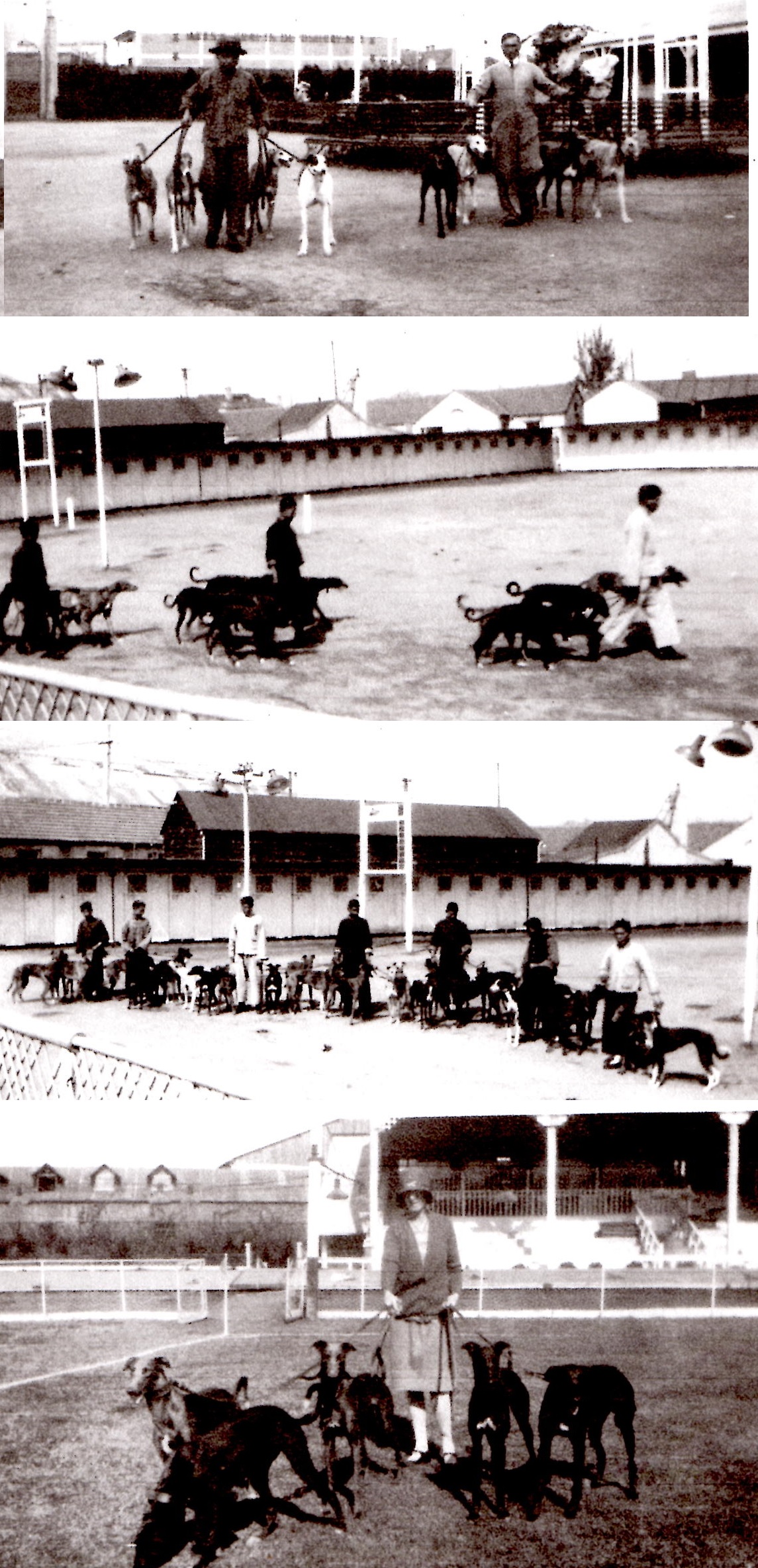 |
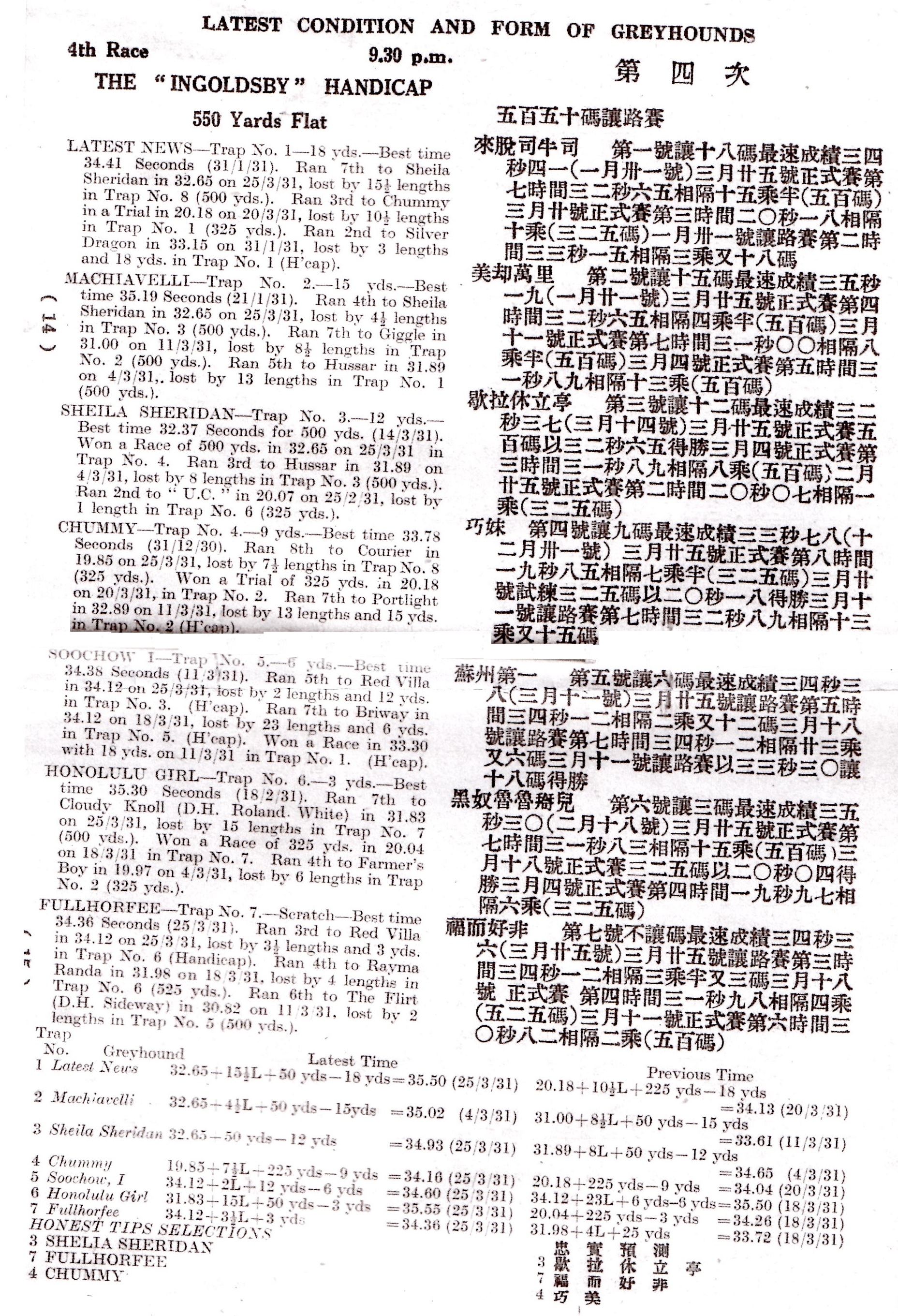 |
||
Reg worked closely with trainers H Upson, H Boyle and H Curtin, as well as some Russian staff and the local kennelhands, called Coolies. He introduced feature events like the Ingoldsby Handicap, the Veterans Cup and Yien Hoo Stakes. Indeed, he was so successful in his first two years at the track that his actions also attracted the attention of the Shanghai Municipal Council. In March 1931 the track owners experienced a significant setback when the Shanghai Municipal Council decreed that the two tracks, Luna Park and Kiachow Road, should close on 31st March 1931. The Shanghai Greyhound Club was established in 1927, just a few months after Luna Park opened its gates for the first time. The 'turf bowl' was enjoyed by many during its brief spell, welcoming the first batch of greyhounds from England, and then boosting the standard of dogs by importing from Australia where the dogs were larger and faster than their English counterparts. Appropriately enough the champion racer from Australia was a dog called Brilliance. The finale on 31st March 1931 was an inter-track event, consisting of 14 races, with greyhounds representing Luna Park and Kiachow Road. Each race contained 7 or 8 dogs to ensure a viable pari-mutuel market could be formed, and this in the end was the tracks downfall. It was too successful in encouraging the keen Chinese gamblers to wager on their favourite dogs. The authorities who campaigned to close the tracks claimed that crowds in excess of 10,000 were given free entry in order to boost tote turnover. They further claimed that a track could take upwards of £20,000 in one night and that this made it a hotbed for criminal activities. In the end that was evidence enough for the authorities to close the tracks.
|
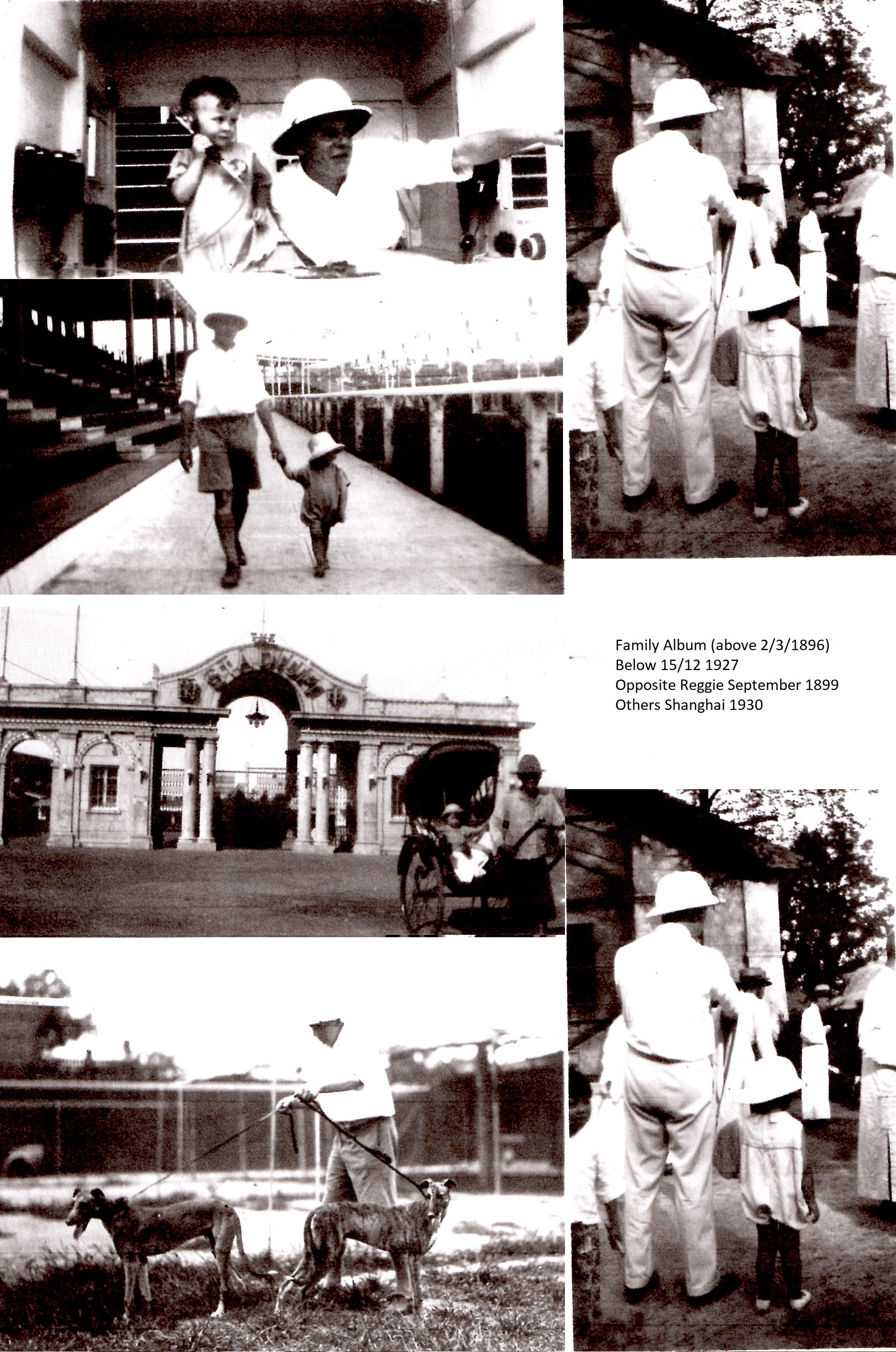 |
||
| The scans below show a complete Shanghai Greyhound track racecard from Thursday 31st July 1930 | |||
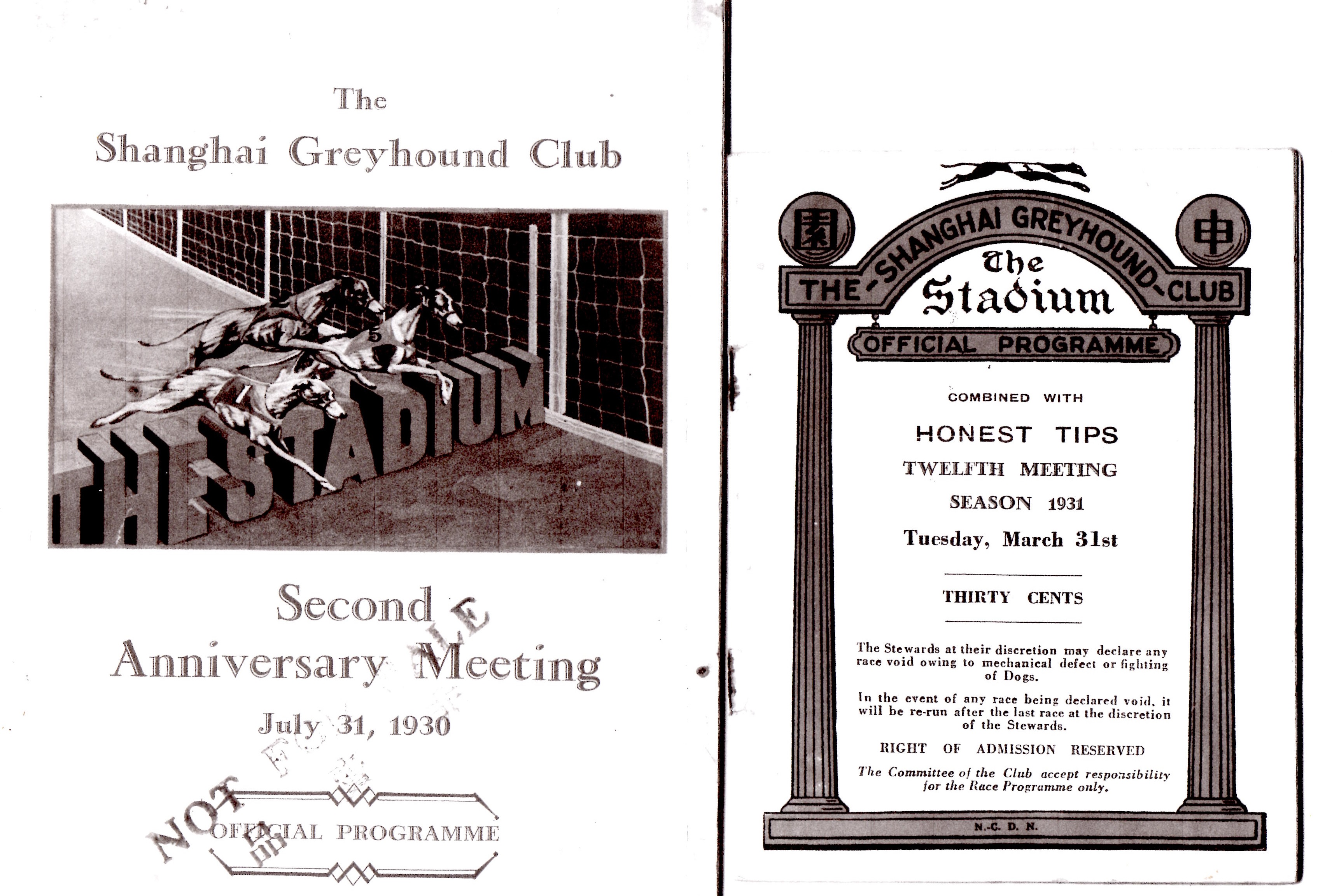 |
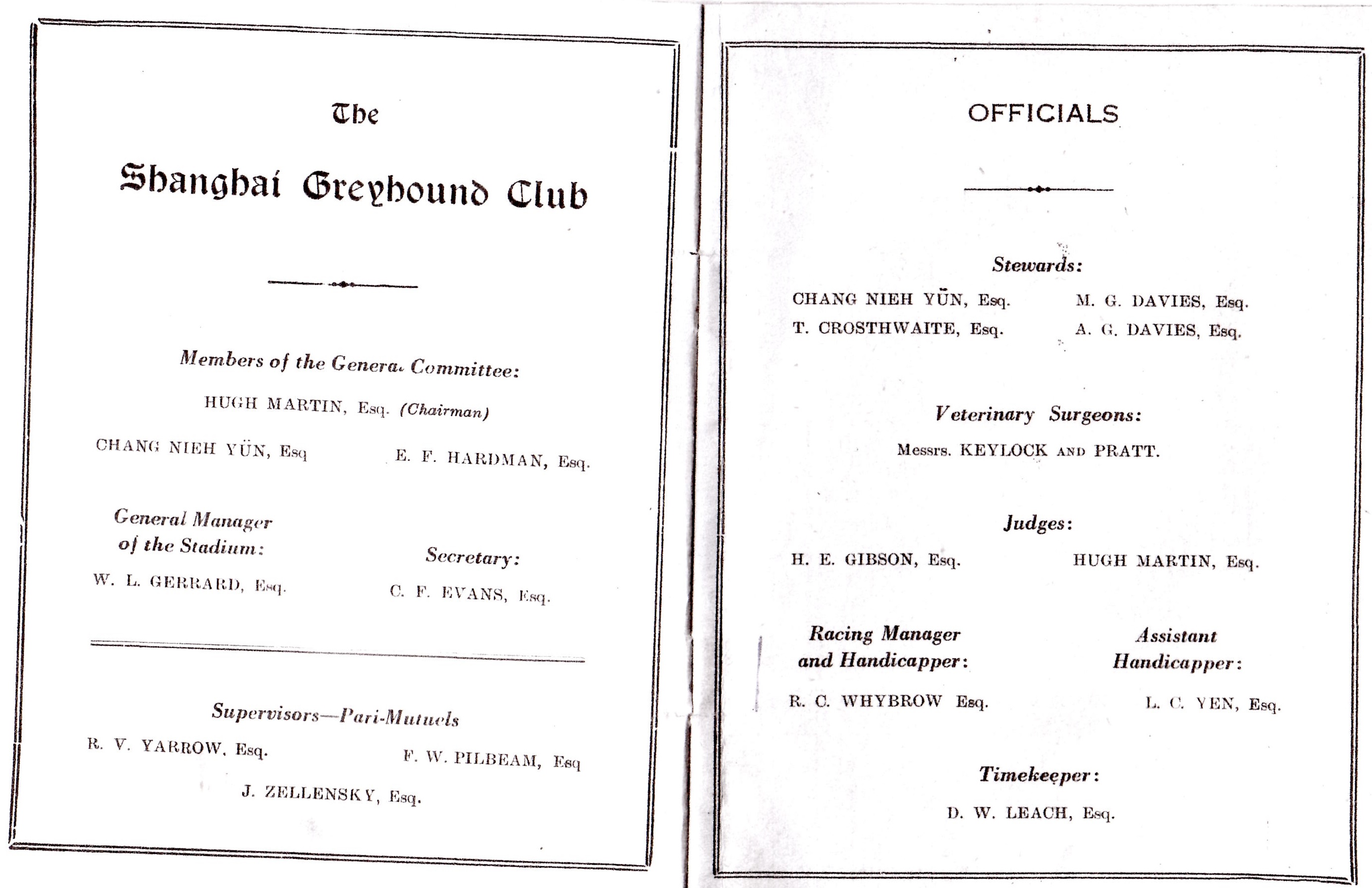 |
||
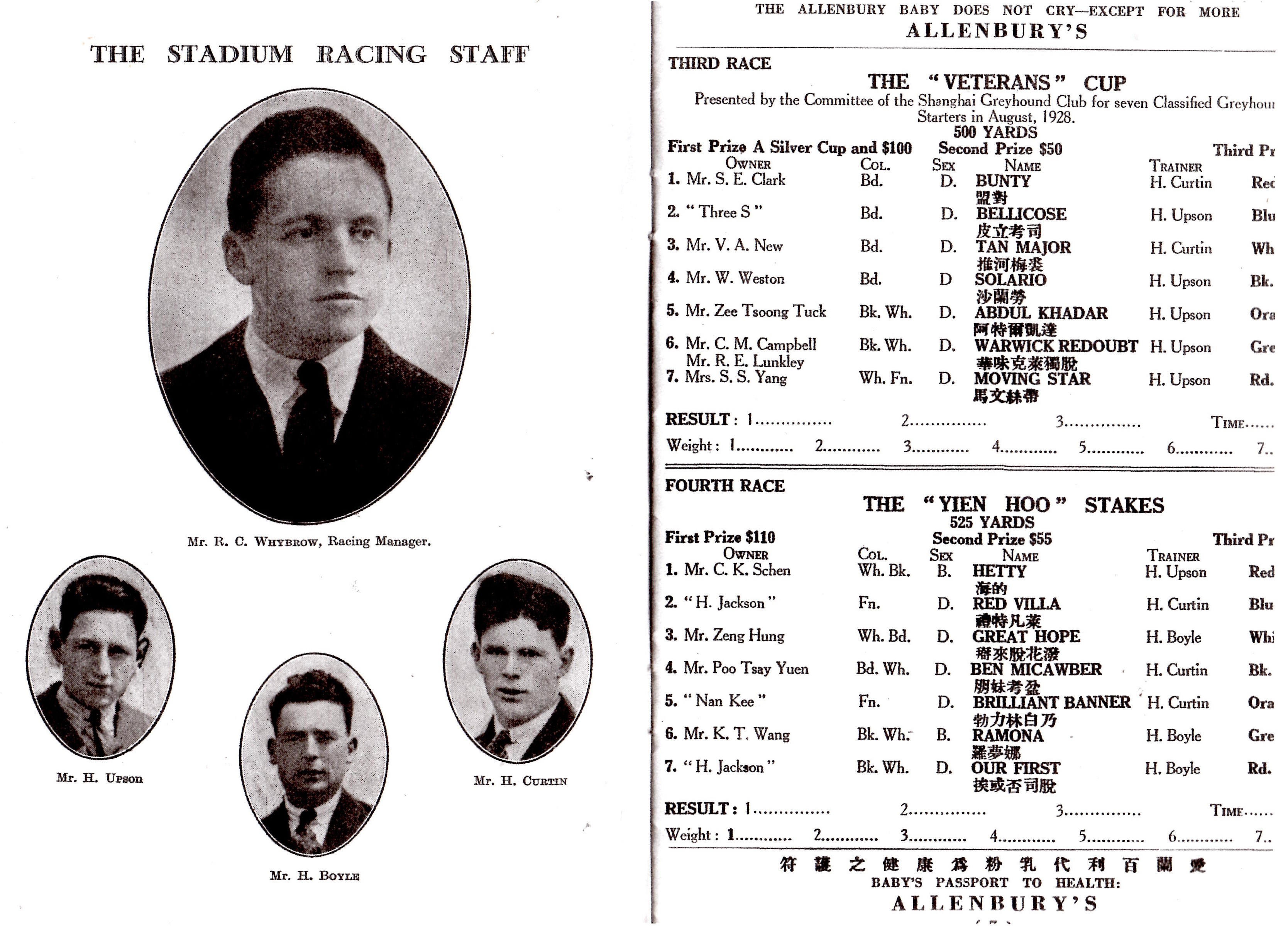 |
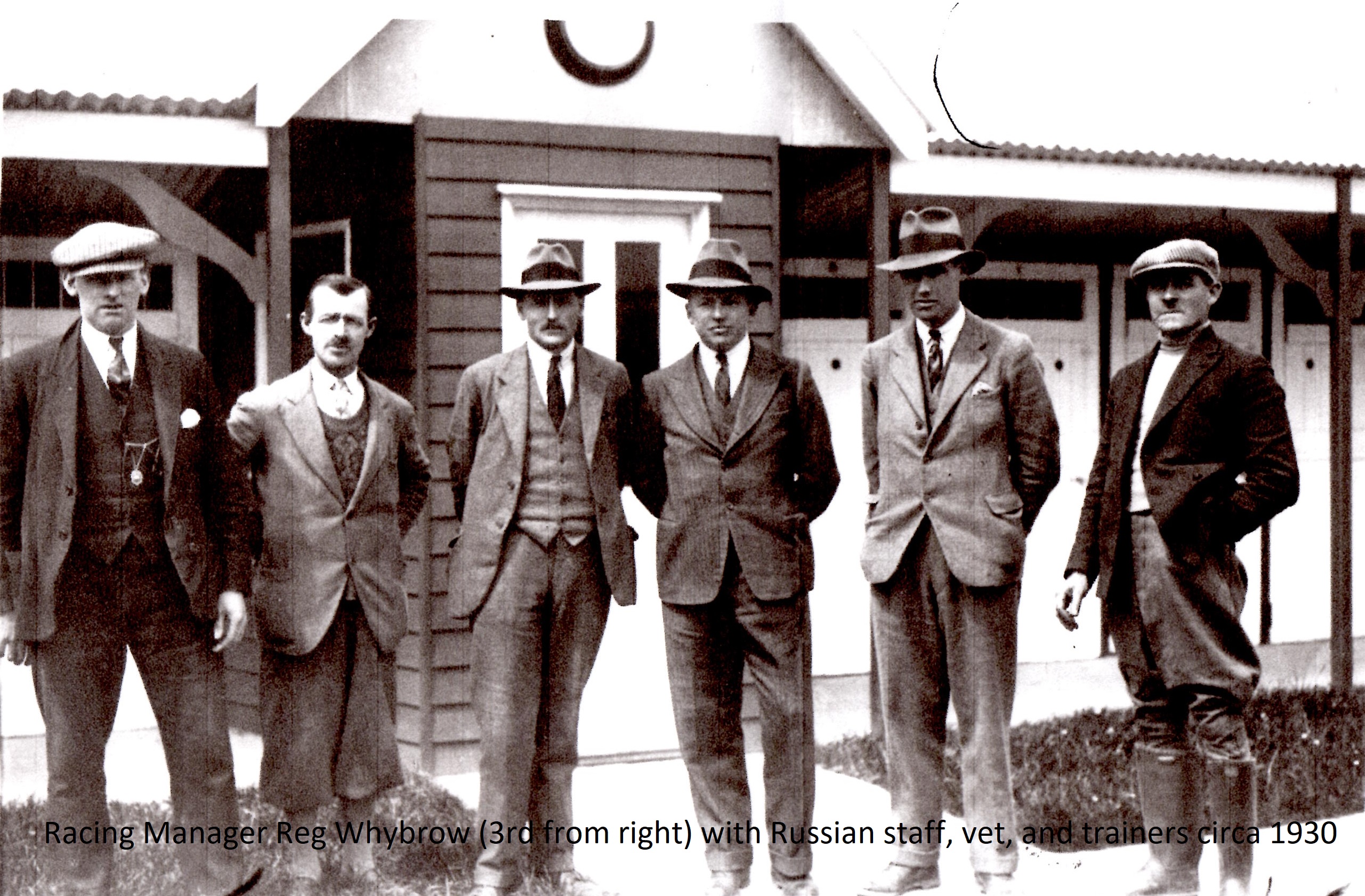 |
||
If anyone has further details about Luna Park, including pictures, or of other members of the British Company who introduced Greyhound racing to China then email me johnwslusar@gmail.com |
|||
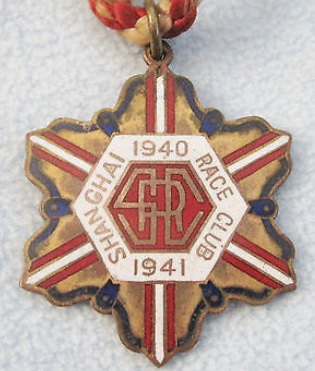 |
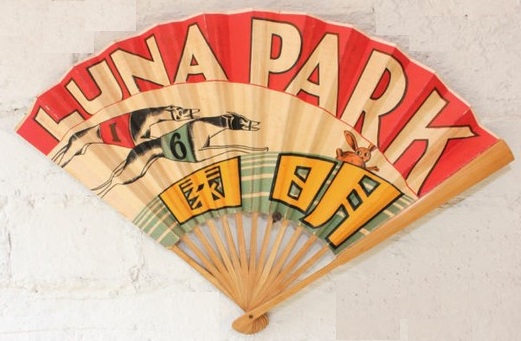 |
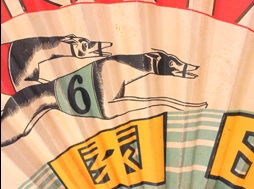 |
|
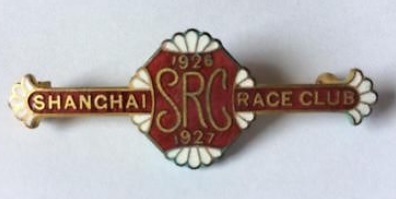 |
|||
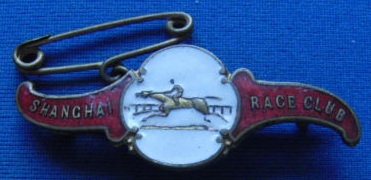 |
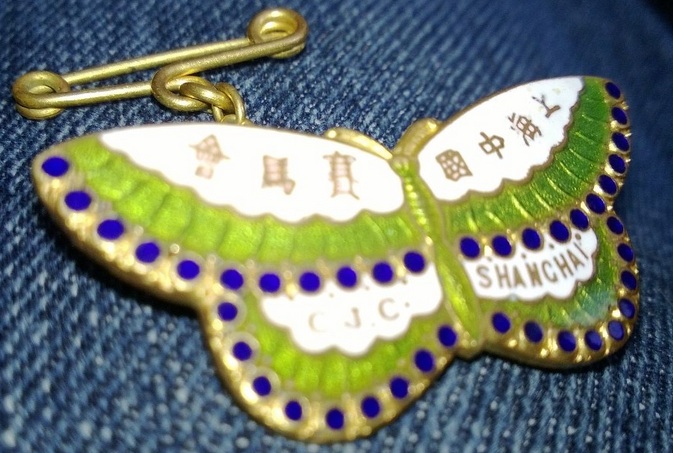 |
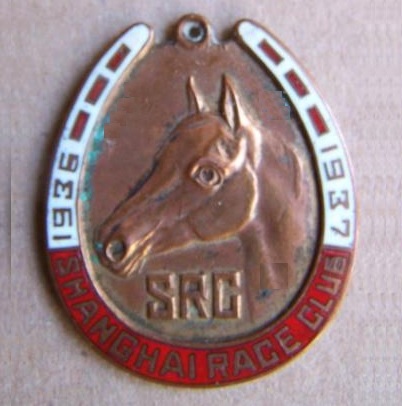 |
|
